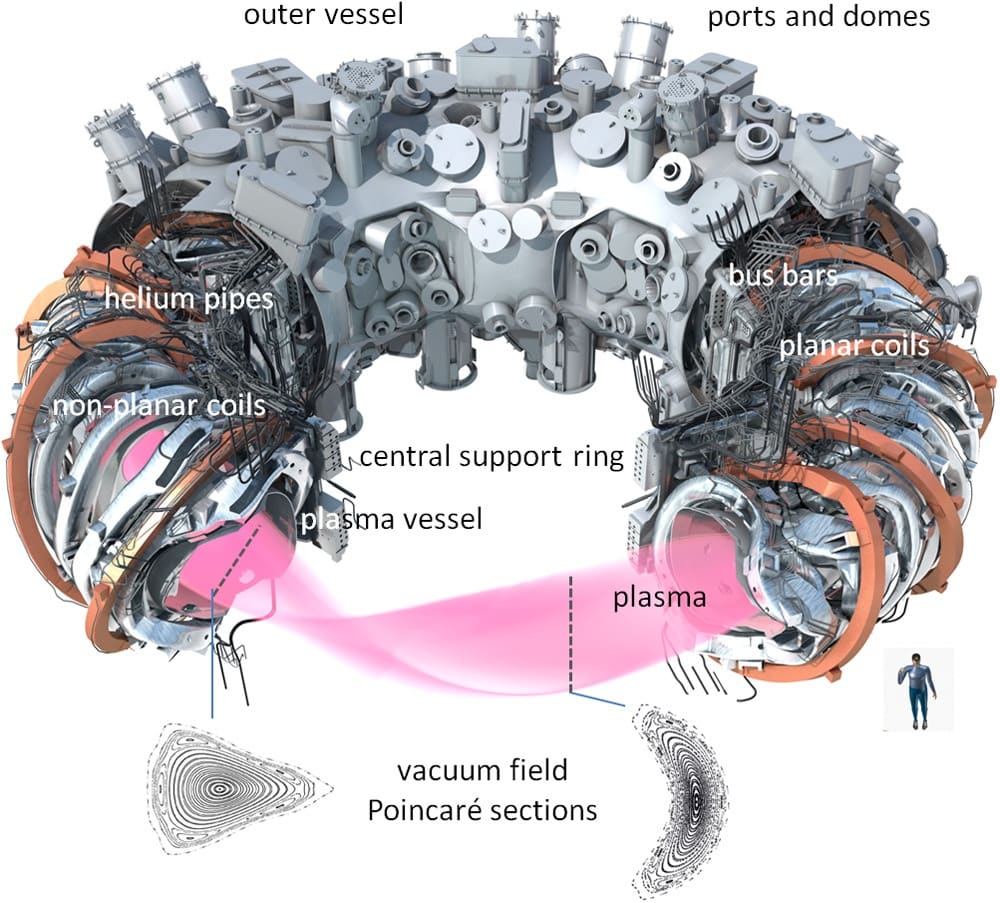The magnetic confinement
in a Stellarator
is based on a strong magnetic field
produced by solenoid coils
surrounding the toroidal vacuum chamber.
The configuration is characterized by a rotational transform, such that a single line of magnetic force that runs through the system intersects a plane of the cross section at points that subsequently rotate around the magnetic axis.
The Stellarator, therefore, differs from the Tokamak and the Reversed Field Pinch by the fact that an electric current is not induced in its plasma and that the magnetic fields of its configuration are all generated from the outside by means of magnetic coils. These coils have the characteristic of being very convoluted to give the desired complex shape to the lines of force of the magnetic field, in order to optimize the confinement of the particles.
The Stellarator has been shown to have a significantly higher density limit than that of a Tokamak with the same magnetic field, in the face of a much greater constructive complexity.

Laboratories with experiments operating in Stellarator configuration:
Consorzio RFX contributes to the experimental campaigns on W7X with the studies of peripheral turbulence using a probe built by RFX researchers that is inserted into the plasma edge.
Further contributions include innovative methods for the measurement of very high electron temperatures by means of the Thomson scattering of laser pulses, as well as the study of the transport of impurities with the pulsed injection of minimal quantities of selected elements.
In addition to physical experimentation, there is an important contribution on the front of data acquisition and management technologies.